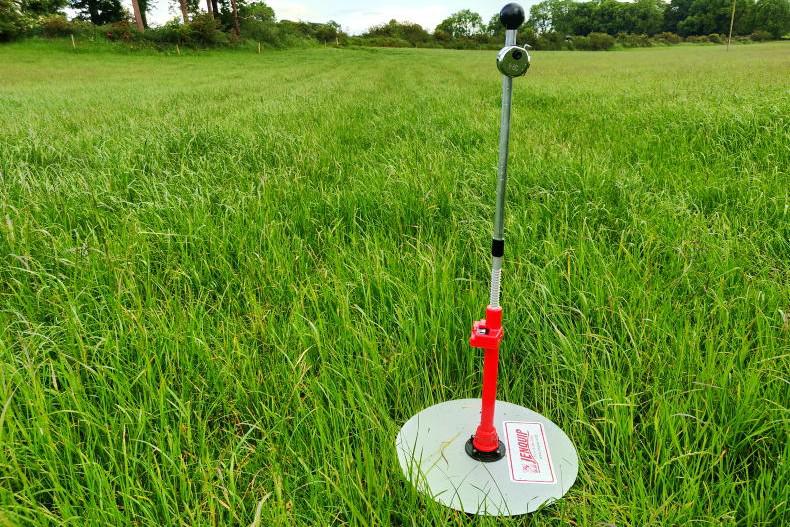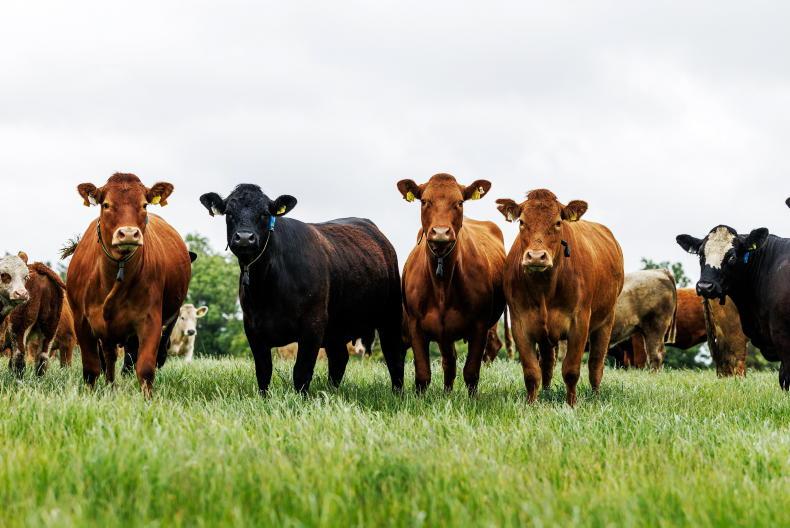The financial landscape for dairy production has been substantially altered during the last five years, with unprecedented increases in both dairy product prices and costs at farm level.
The volatility of prices, coupled with steadily increasing farm input costs, has underlined the necessity for farmers to develop more resilient, low-input, pasture-based dairy systems.
This necessity has been reinforced by intensifying pressures to reduce the impacts of agriculture on the environment resulting in reduced chemical nitrogen (N) fertiliser allowances for all farms.
It is hugely challenging to maintain farm productivity and profitability while reducing chemical N use levels. These pressures have prompted farmers to incorporate white clover (WC) within grazed pastures to fix atmospheric N and reduce requirements for chemical N fertiliser.
Previous studies indicate that the incorporation of WC in grazing swards can fix 100 to 220kg N/ha/year, thereby substantially reducing chemical N application requirements, while simultaneously increasing animal dry matter intake and performance.
Despite these advantages and the regulatory requirement to include WC in new sward seed mixes in recent years, nonetheless, the contribution of WC to grazed pastures on commercial dairy farms remains low, with large variation in both establishment success and medium-term persistence on commercial farms.
On heavier soil types, such as farms in the border midlands and western regions, confidence among farmers in WC-based swards is further reduced due to extended periods of lower soil temperatures in spring and the added concerns that WC-based swards may have an increased risk of pasture damage due to waterlogging during early spring and late autumn.
While many studies evaluating WC-based swards have been undertaken, there has been limited research documenting the performance of WC within heavier soils, such as in the border region of Ireland.
On that basis, the objective of the current study was to compare the performance of perennial ryegrass only (PR) swards receiving high rates of chemical N fertiliser application and perennial ryegrass white clover (PRWC) swards receiving reduced rates of chemical N on a wetland soil type at Teagasc Ballyhaise Agricultural College, Co Cavan, on pasture production and animal performances throughout the grazing seasons of 2023 and 2024.
Clover impact
The trial was conducted on 144 cows, which were evenly assigned to one of the two treatment groups and remained within that treatment for the duration of the study.
Grazing management was similar for both sward types in terms of pre- and post-grazing sward height, pre-grazing herbage mass and residency time. During the two years, PRWC swards produced an additional +0.6t DM/ha of pasture compared to PR pastures (12.3 and 11.7 t DM/ha for PRWC and PR, respectively).
This increase in herbage production was achieved with significant reductions in chemical N fertiliser applications, with an average of 108kg N/ha applied to PRWC pastures, compared to 193kg N/ha for the PR swards during the same period.
Chemical N fertiliser applications were similar for both sward types for the first two rotations in spring and early summer, with significant reductions in N fertilisation for PRWC pastures from May onwards each year, based on increased WC contents within the PRWC swards.
Despite difficult grazing conditions during autumn 2023 and spring 2024, annual average WC contents were similar for both years during the study (19% and 18% for 2023 and 2024, respectfully; see Figure 1), while sward stolon measurements taken on three occasions each year (during spring, summer and autumn) confirmed the presence of a significant WC content within the PRWC swards.
Nonetheless, there remains a substantial variation in WC content between paddocks at the site, with approximately 25% of the area where inadequate WC has been established, thereby necessitating that higher chemical N application rates continue on this proportion of the PRWC area.
Sward nutritive value parameters (ash, crude protein (CP), neutral detergent fibre (NDF) and acid detergent fibre (ADF)) were improved with PRWC swards during the two-year study period.
In particular, increased sward CP content and reduced Neutral and Acid Detergent Fibre contents for PRWC swards (18.7; 39.0 and 22.0%, respectively) compared to PR swards (18.1, 40.7 and 22.4 %, respectively) were consistently evident during the two-year study period.
This was particularly noticeable during the difficult spring and early summer period of 2024, when pasture quality was generally poor across the country in comparison to longer-term norms and indicative of the potential of PRWC swards to support improved pasture quality.
Milk
The incorporation of WC in animal diets resulted in increased milk (5,538kg and 5,741kg/cow for PR and PRWC, respectively) and milk solids (517kg and 530kg/cow for PR and PRWC, respectively) production over the two-year study period, with no significant differences in milk fat, protein or lactose composition.
Similarly, there were no significant differences in either animal body weight or body condition score observed for the PR and PRWC systems during the two year study period.
Implications of this research
This study demonstrates the successful establishment of WC to maintain pasture productivity and reduce dependence on chemical N fertiliser applications in the border, midlands and west region of Ireland. Previous studies have stated that a minimum WC sward content of 20% was required to achieve the production benefits of WC in grazing swards.
However, the overall sward WC contributions in this study were just below that threshold in each of the two years of this study. Nonetheless, even at relatively lower sward WC contents, the results observed indicate that WC can make a positive impact primarily in terms of maintaining herbage production, while reducing requirements for chemical N fertiliser application.
This change can help to insulate farmers from dramatic price fluxes in both milk prices and fertiliser costs which have occurred in recent years. Although the establishment of new swards represents a considerable cost at farm level, the establishment of PRWC swards can increase farm profitability compared to traditional PR systems based on reduced chemical N fertilisation costs and increased animal performance.
Moreover, and in addition to the substantial economic advantage, the development of such systems will reduce greenhouse gas emissions associated with the pasture-based grazing systems under evaluation, therefore further improving the sustainability of Irish grazing systems.
Although the results showed successful establishment of WC swards, longer-term evaluation on the persistence and productivity of WC swards is essential on wetland soils, such as Ballyhaise, to reduce the variation in WC contribution between paddocks and years – and build confidence among farmers to encourage greater adoption at commercial farm level.









SHARING OPTIONS